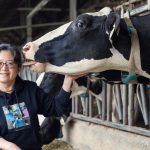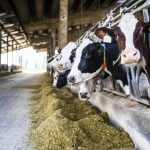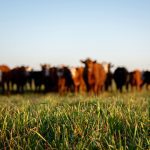Dalhousie University researchers use artificial intelligence to create new dairy farm apps that analyze cattle sounds and measure methane.


Canadian farmers can access two new app-based dairy farm tools from Dalhousie University: One analyzes cattle sounds, another promises farm-specific methane measurements


New Zealand company in running for investment in emission-reducing treatment for livestock

Cross-Canada project to reduce methane production will be led by UBC researcher




Greenhouse gases from cattle, fuel oil dropped; nitrogen, diesel fuel emissions increased

Bovaer is safe and effective but other GHG-limiting solutions should be appraised, says researcher

Methane-reducing tool will drive opportunities, say industry reps